1. Osguthorpe JD, Weisman RA. ‘Medial maxillectomy’ for lateral nasal wall neoplasms. Arch Otolaryngol Head Neck Surg. 1991; 117(7):751–6.
2. Kennedy DW, Adappa ND. Endoscopic maxillary antrostomy: not just a simple procedure. Laryngoscope. 2011; 121(10):2142–5.
3. Tan J, Han D, Wang J, Liu T, Wang T, Zang H, et al. Numerical simulation of normal nasal cavity airflow in Chinese adult: a computational flow dynamics model. Eur Arch Otorhinolaryngol. 2012; 269(3):881–9.
4. Weber RK, Werner JA, Hildenbrand T. Endonasal endoscopic medial maxillectomy with preservation of the inferior turbinate. Am J Rhinol Allergy. 2010; 24(6):132–5.
5. Lindemann J, Keck T, Wiesmiller K, Sander B, Brambs HJ, Rettinger G, et al. Nasal air temperature and airflow during respiration in numerical simulation based on multislice computed tomography scan. Am J Rhinol. 2006; 20(2):219–23.
6. Garcia GJ, Bailie N, Martins DA, Kimbell JS. Atrophic rhinitis: a CFD study of air conditioning in the nasal cavity. J Appl Physiol (1985). 2007; 103(3):1082–92.
7. Kim DW, Chung SK, Na Y. Numerical study on the air conditioning characteristics of the human nasal cavity. Comput Biol Med. 2017; 86:18–30.
8. Ashman A, Psaltis AJ, Wormald PJ, Tan NC. Extended endoscopic approaches to the maxillary sinus. J Laryngol Otol. 2020; 134(6):473–80.
9. Doorly DJ, Taylor DJ, Schroter RC. Mechanics of airflow in the human nasal airways. Respir Physiol Neurobiol. 2008; 163(1-3):100–10.
10. Chung SK, Jo G, Kim SK, Na Y. The effect of a middle meatal antrostomy on nitric oxide ventilation in the maxillary sinus. Respir Physiol Neurobiol. 2014; 192:7–16.
11. Burgos MA, Sanmiguel-Rojas E, Martín-Alcántara A, Hidalgo-Martínez M. Effects of the ambient temperature on the airflow across a Caucasian nasal cavity. Int J Numer Method Biomed Eng. 2014; 30(3):430–45.
12. Inthavong K, Ma J, Shang Y, Dong J, Chetty ASR, Tu J, et al. Geometry and airflow dynamics analysis in the nasal cavity during inhalation. Clin Biomech (Bristol, Avon). 2019; 66:97–106.
13. Chung SK, Na Y. Dynamic characteristics of heat capacity of the human nasal cavity during a respiratory cycle. Respir Physiol Neurobiol. 2021; 290:103674.
14. Xiong GX, Zhan JM, Zuo KJ, Rong LW, Li JF, Xu G. Use of computational fluid dynamics to study the influence of the uncinate process on nasal airflow. J Laryngol Otol. 2011; 125(1):30–7.
15. Leong SC, Chen XB, Lee HP, Wang DY. A review of the implications of computational fluid dynamic studies on nasal airflow and physiology. Rhinology. 2010; 48(2):139–45.
16. Won TB, Cho SW, Sung MW, Paek SH, Chan S, Salisbury K, et al. Validation of a rhinologic virtual surgical simulator for performing a Draf 3 endoscopic frontal sinusotomy. Int Forum Allergy Rhinol. 2019; 9(8):910–7.
17. Abouali O, Keshavarzian E, Farhadi Ghalati P, Faramarzi A, Ahmadi G, Bagheri MH. Micro and nanoparticle deposition in human nasal passage pre and post virtual maxillary sinus endoscopic surgery. Respir Physiol Neurobiol. 2012; 181(3):335–45.
18. Lindemann J, Keck T, Wiesmiller K, Sander B, Brambs HJ, Rettinger G, et al. A numerical simulation of intranasal air temperature during inspiration. Laryngoscope. 2004; 114(6):1037–41.
19. International Commission on Radiological Protection. Human respiratory tract model for radiological protection. Ann ICRP. 1994; 24(1-3):1–482.
20. Costa ML, Psaltis AJ, Nayak JV, Hwang PH. Long-term outcomes of endoscopic maxillary mega-antrostomy for refractory chronic maxillary sinusitis. Int Forum Allergy Rhinol. 2015; 5(1):60–5.
21. Cho DY, Hwang PH. Results of endoscopic maxillary mega-antrostomy in recalcitrant maxillary sinusitis. Am J Rhinol. 2008; 22(6):658–62.
22. Kennedy DW, Shaalan H. Reevaluation of maxillary sinus surgery: experimental study in rabbits. Ann Otol Rhinol Laryngol. 1989; 98(11):901–6.
23. Suzuki M, Nakamura Y, Yokota M, Ozaki S, Murakami S. Modified transnasal endoscopic medial maxillectomy through prelacrimal duct approach. Laryngoscope. 2017; 127(10):2205–9.
24. Lundberg JO. Nitric oxide and the paranasal sinuses. Anat Rec (Hoboken). 2008; 291(11):1479–84.
25. Zhang J, Sun Y, Liu M, Sun C, Tian L. Predictive and diagnostic value of fractional exhaled nitric oxide in patients with chronic rhinosinusitis. Med Sci Monit. 2019; 25:150–6.
26. Kirihene RK, Rees G, Wormald PJ. The influence of the size of the maxillary sinus ostium on the nasal and sinus nitric oxide levels. Am J Rhinol. 2002; 16(5):261–4.
27. Saibene AM, Felisati G, Pipolo C, Bulfamante AM, Quadrio M, Covello V. Partial preservation of the inferior turbinate in endoscopic medial maxillectomy: a computational fluid dynamics study. Am J Rhinol Allergy. 2020; 34(3):409–16.
28. Eccles R, Jones AS. The effect of menthol on nasal resistance to air flow. J Laryngol Otol. 1983; 97(8):705–9.
29. Jones AS, Crosher R, Wight RG, Lancer JM, Beckingham E. The effect of local anaesthesia of the nasal vestibule on nasal sensation of airflow and nasal resistance. Clin Otolaryngol Allied Sci. 1987; 12(6):461–4.
30. Malik J, Spector BM, Wu Z, Markley J, Zhao S, Otto BA, et al. Evidence of nasal cooling and sensory impairments driving patient symptoms with septal deviation. Laryngoscope. 2022; 132(3):509–17.
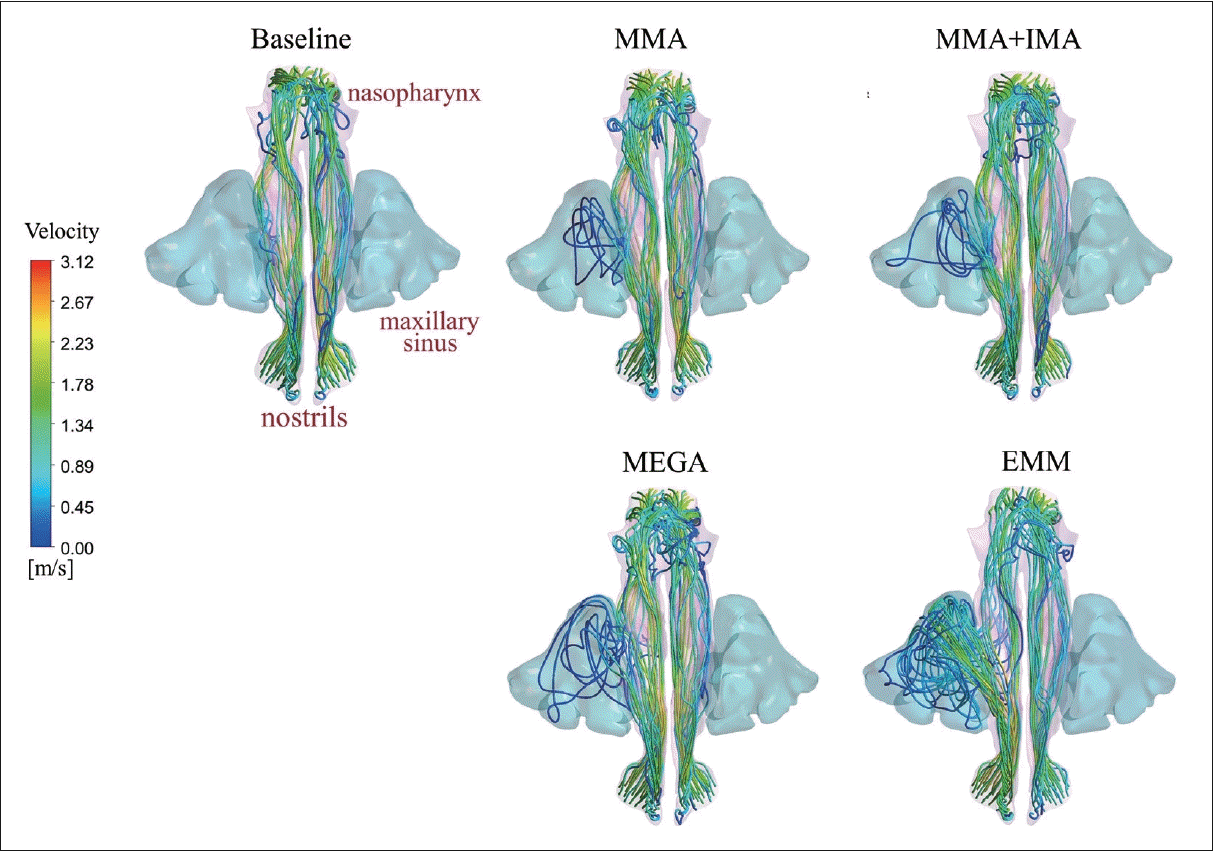
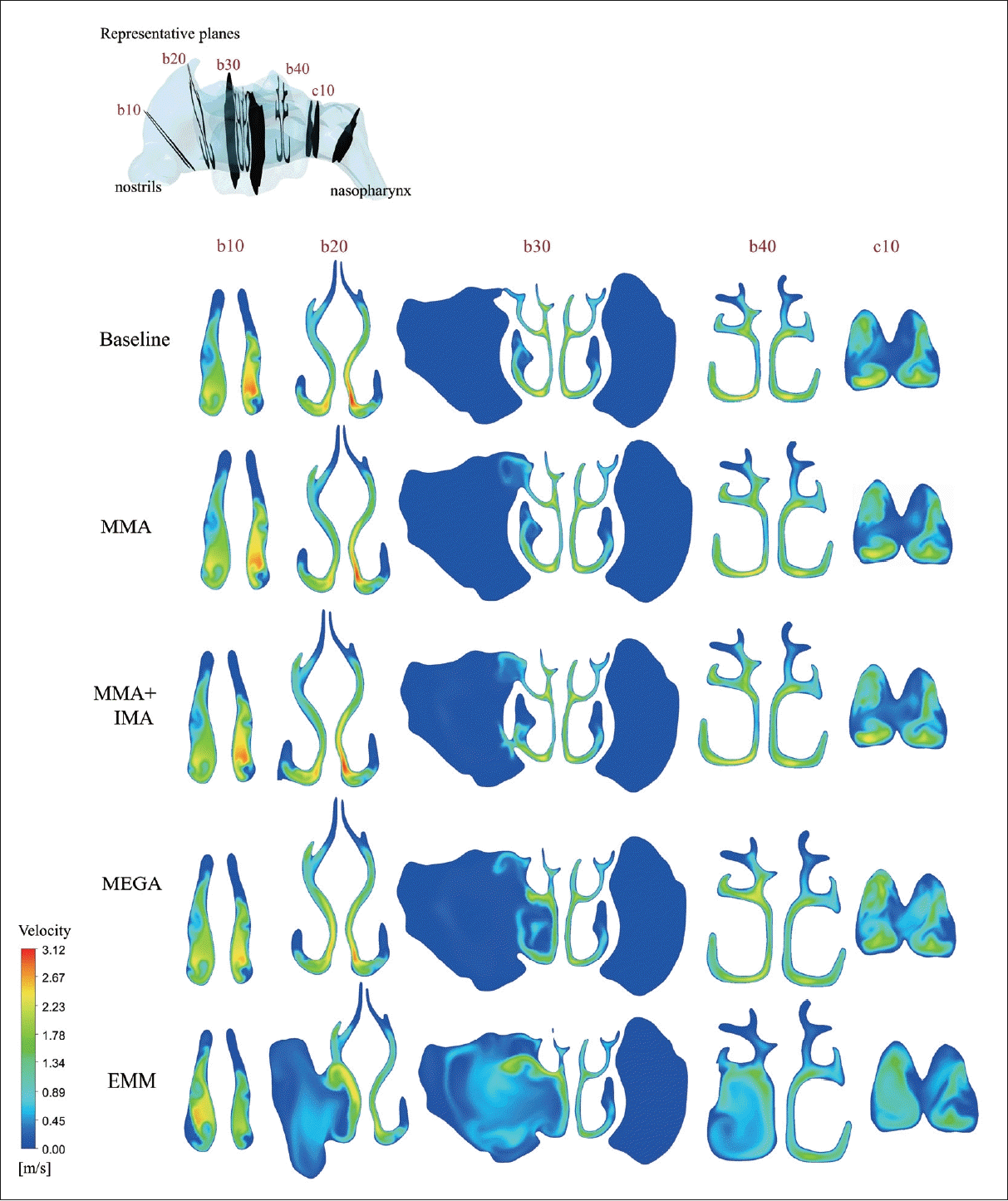
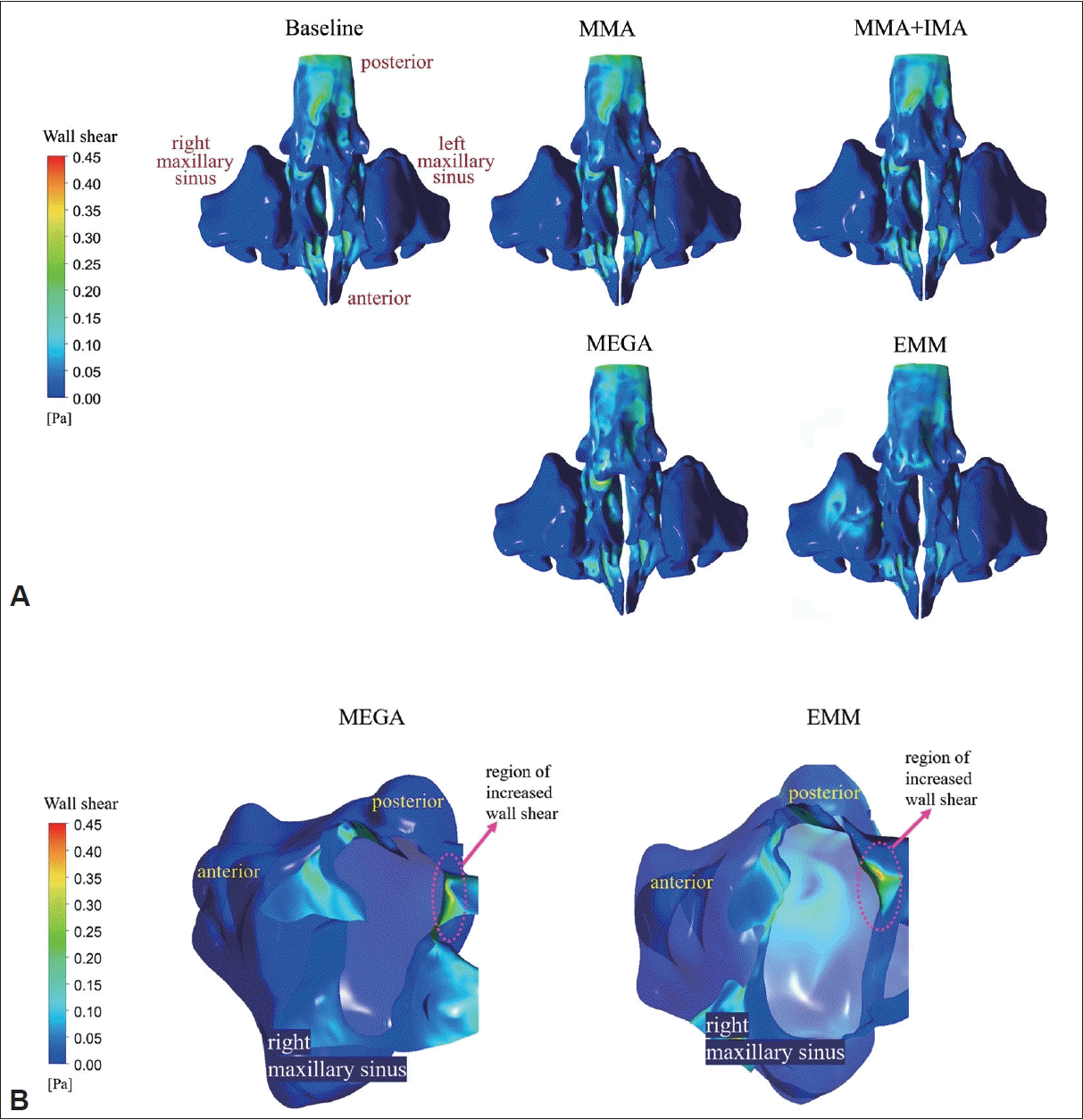
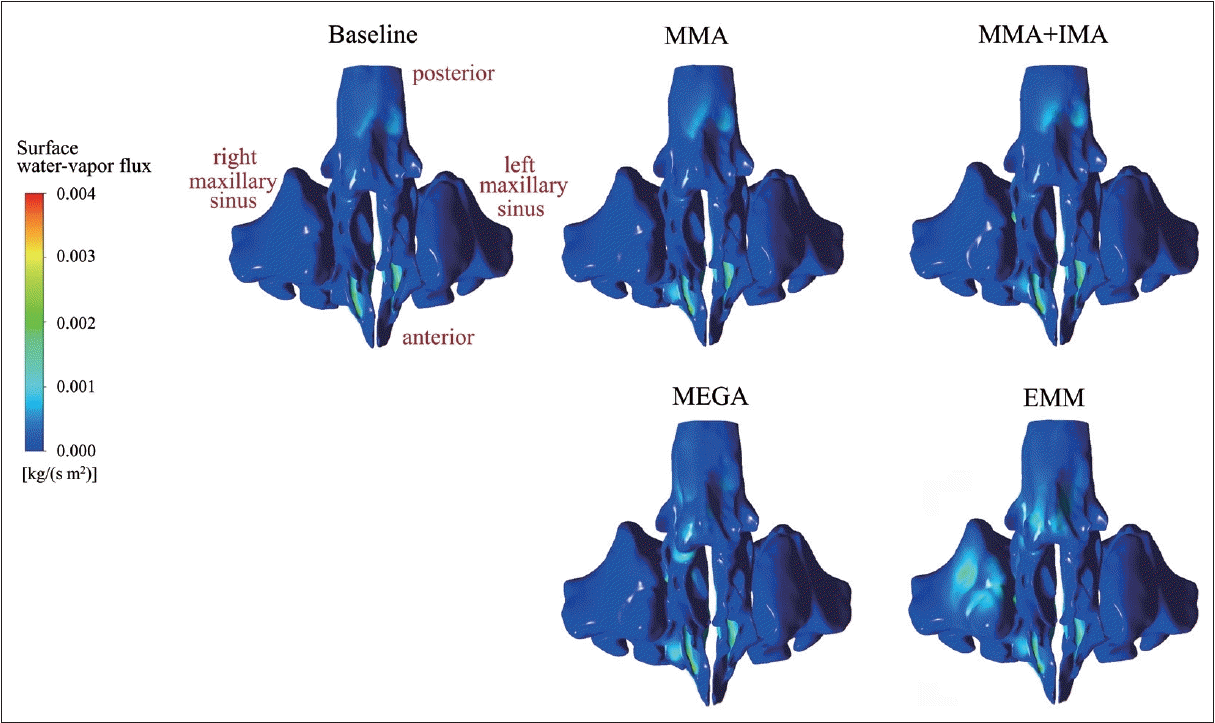
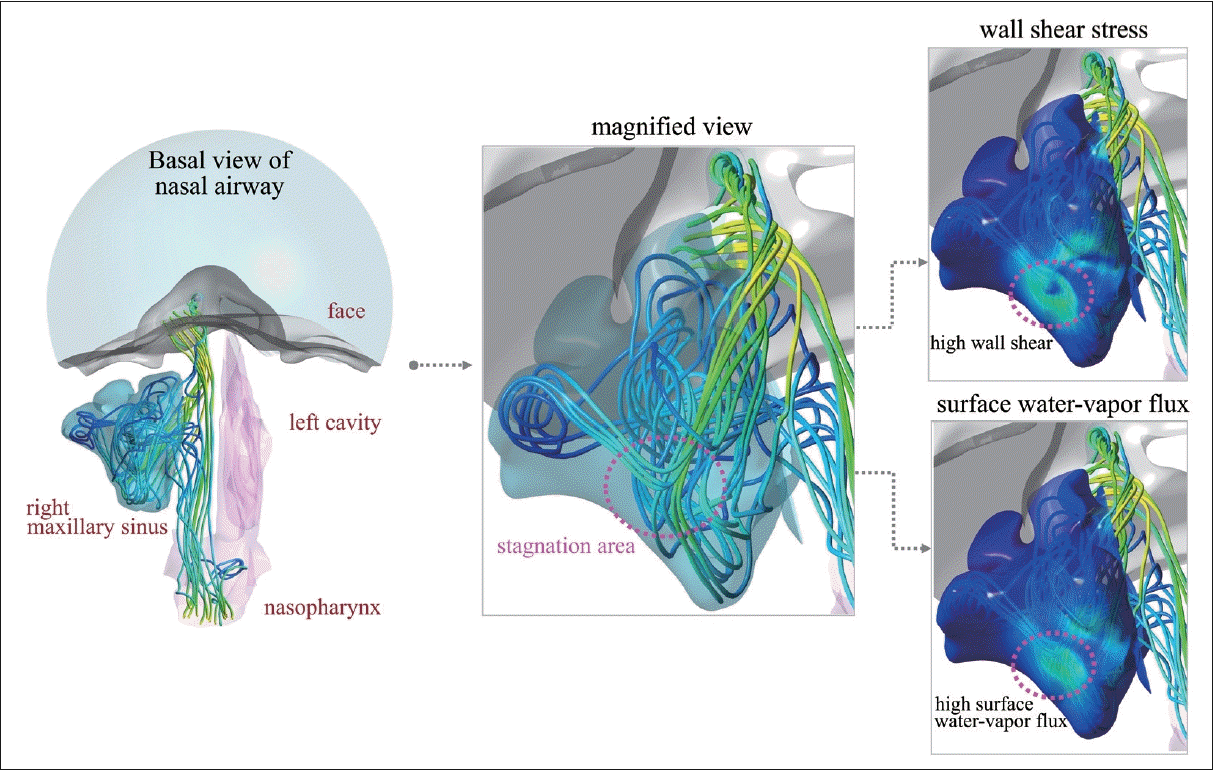




 PDF
PDF Citation
Citation Print
Print



 XML Download
XML Download